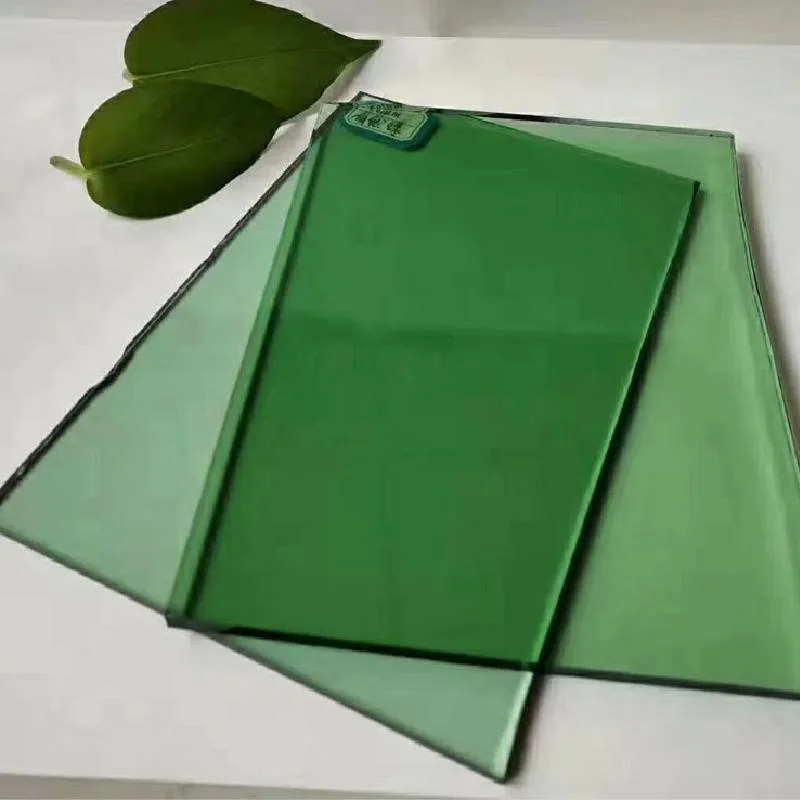The Float Glass Manufacturing Process
Float glass is a crucial material used in various applications, from window panes to smartphone screens. The manufacturing process of float glass is a sophisticated blend of art and science, designed to produce flat glass with exceptional quality and clarity. This article will delve into the intricacies of the float glass manufacturing process, highlighting its key stages and significance.
The float glass process begins with the careful selection of raw materials, primarily silica sand, soda ash, and limestone. These materials are combined in precise proportions to form a batch that possesses the required properties for glass making. Other additives such as alumina and magnesium may also be included to enhance the glass's durability and workability. After preparation, the batch is transported to a furnace, where it is melted at extremely high temperatures, typically around 1,700 degrees Celsius.
Once the raw materials are melted into a molten glass, the next step is to form the glass into a flat, uniform thickness. This is achieved through the float process. The molten glass is carefully poured onto a bath of molten tin, which is critical to the process as it provides a smooth, non-reactive surface for the glass to flow over. The tin bath allows the glass to spread evenly, achieving a uniform thickness without the blemishes typical of other methods. The glass floats on the tin because it is less dense, and this results in a smooth, flawless surface that is essential for high-quality glass products.
float glass manufacturing process
As the glass spreads across the tin, it is gradually cooled and solidified. This cooling occurs in a controlled manner, often using a series of lehr (annealing) furnaces to ensure that the glass maintains its structural integrity and is free from internal stresses. The cooling process is crucial, as it influences the final mechanical properties and surface quality of the glass.
Once the glass has cooled, it is cut into sheets of predetermined sizes. Quality control is an essential part of this stage, as manufacturers must inspect the glass for any defects, such as bubbles or imperfections. Advanced technologies, including automated inspection systems, are used to identify flaws that might compromise the glass's performance.
After cutting and inspecting, the float glass sheets are typically packaged for shipment or further processed for specific applications. This can include additional treatments such as coating for improved energy efficiency or strength enhancements. The versatility of float glass allows for a wide range of uses, from architecture to automotive applications, making it a vital component in modern construction and manufacturing.
In summary, the float glass manufacturing process is a sophisticated method that transforms raw materials into high-quality, flat glass. From the careful selection of raw materials to the intricate melting, floating, and cooling processes, each stage plays a crucial role in determining the final product's quality and usability. As technology advances, the processes involved in float glass production continue to evolve, promising even greater efficiency and quality in the glass industry. This evolution not only enhances practical applications but also contributes to sustainability efforts by optimizing resource use and reducing emissions associated with glass manufacturing.
 Afrikaans
Afrikaans  Albanian
Albanian  Amharic
Amharic  Arabic
Arabic  Armenian
Armenian  Azerbaijani
Azerbaijani  Basque
Basque  Belarusian
Belarusian  Bengali
Bengali  Bosnian
Bosnian  Bulgarian
Bulgarian  Catalan
Catalan  Cebuano
Cebuano  Corsican
Corsican  Croatian
Croatian  Czech
Czech  Danish
Danish  Dutch
Dutch  English
English  Esperanto
Esperanto  Estonian
Estonian  Finnish
Finnish  French
French  Frisian
Frisian  Galician
Galician  Georgian
Georgian  German
German  Greek
Greek  Gujarati
Gujarati  Haitian Creole
Haitian Creole  hausa
hausa  hawaiian
hawaiian  Hebrew
Hebrew  Hindi
Hindi  Miao
Miao  Hungarian
Hungarian  Icelandic
Icelandic  igbo
igbo  Indonesian
Indonesian  irish
irish  Italian
Italian  Japanese
Japanese  Javanese
Javanese  Kannada
Kannada  kazakh
kazakh  Khmer
Khmer  Rwandese
Rwandese  Korean
Korean  Kurdish
Kurdish  Kyrgyz
Kyrgyz  Lao
Lao  Latin
Latin  Latvian
Latvian  Lithuanian
Lithuanian  Luxembourgish
Luxembourgish  Macedonian
Macedonian  Malgashi
Malgashi  Malay
Malay  Malayalam
Malayalam  Maltese
Maltese  Maori
Maori  Marathi
Marathi  Mongolian
Mongolian  Myanmar
Myanmar  Nepali
Nepali  Norwegian
Norwegian  Norwegian
Norwegian  Occitan
Occitan  Pashto
Pashto  Persian
Persian  Polish
Polish  Portuguese
Portuguese  Punjabi
Punjabi  Romanian
Romanian  Russian
Russian  Samoan
Samoan  Scottish Gaelic
Scottish Gaelic  Serbian
Serbian  Sesotho
Sesotho  Shona
Shona  Sindhi
Sindhi  Sinhala
Sinhala  Slovak
Slovak  Slovenian
Slovenian  Somali
Somali  Spanish
Spanish  Sundanese
Sundanese  Swahili
Swahili  Swedish
Swedish  Tagalog
Tagalog  Tajik
Tajik  Tamil
Tamil  Tatar
Tatar  Telugu
Telugu  Thai
Thai  Turkish
Turkish  Turkmen
Turkmen  Ukrainian
Ukrainian  Urdu
Urdu  Uighur
Uighur  Uzbek
Uzbek  Vietnamese
Vietnamese  Welsh
Welsh  Bantu
Bantu  Yiddish
Yiddish  Yoruba
Yoruba  Zulu
Zulu 

